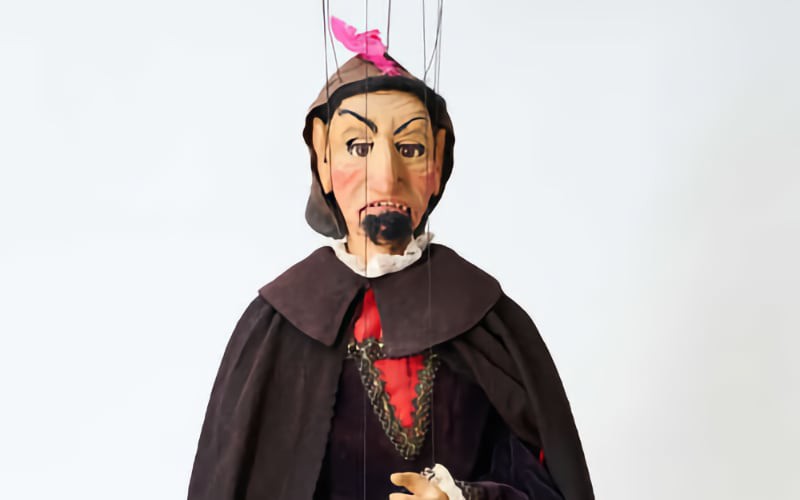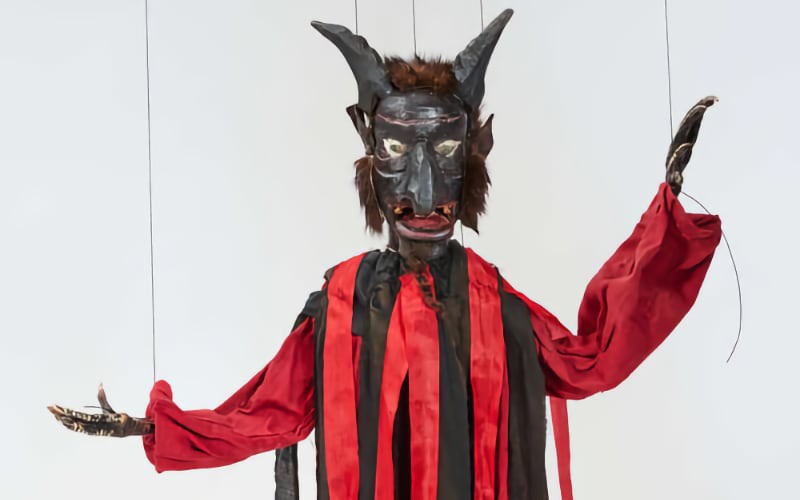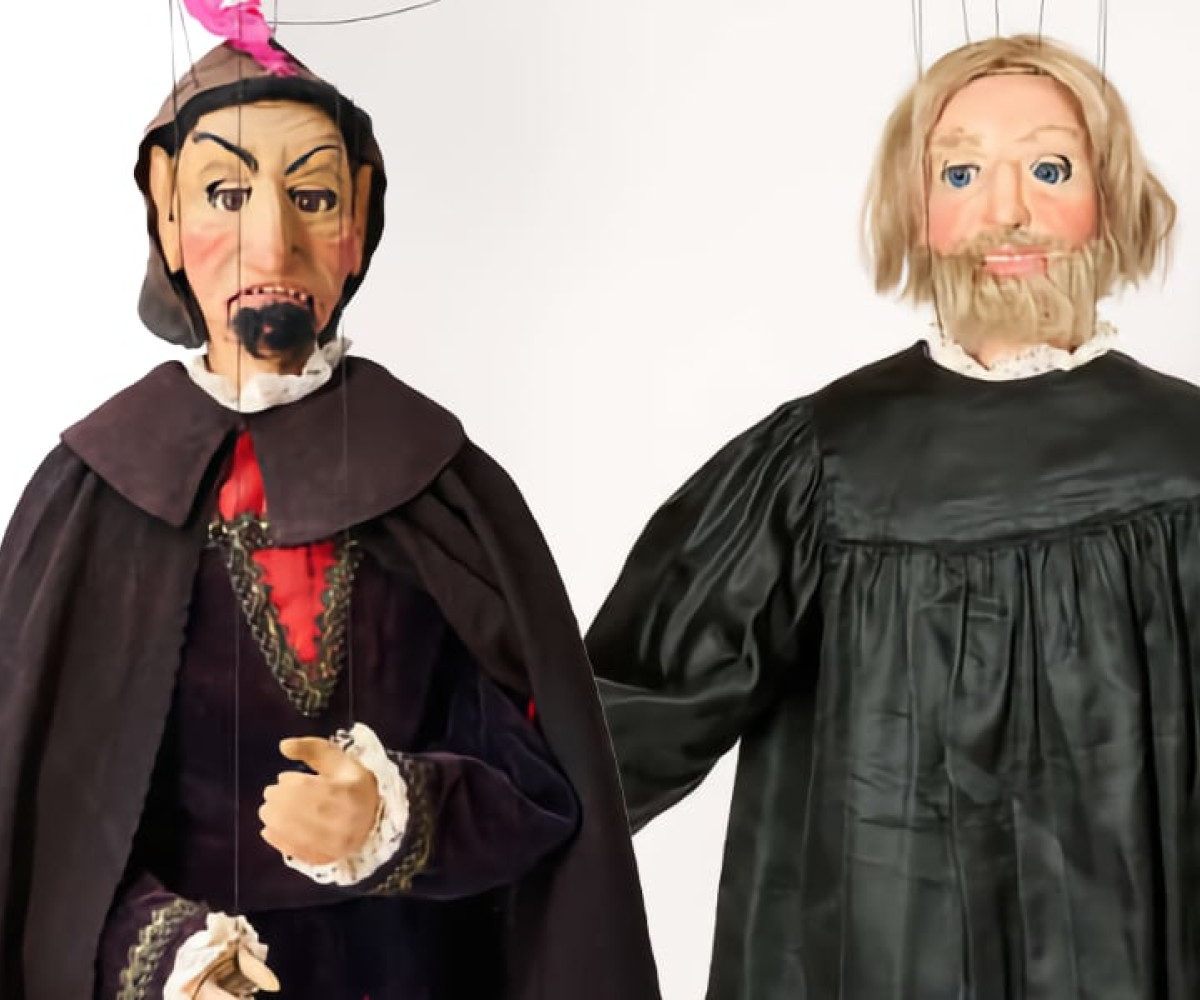In the performance, fireworks, flickering lights, magical appearances and flights through the air create the magic of the piece.




The legend of Faust is one of the most popular marionette plays in Europe. It tells the tragedy of the arrogant Dr. Faust, who sells his soul to the Devil for the power of magic. The demon Mephistopheles makes a pact with him, and in the end, Faust goes to hell.
In the performance, fireworks, flickering lights, magical appearances and flights through the air create the magic of the piece.


